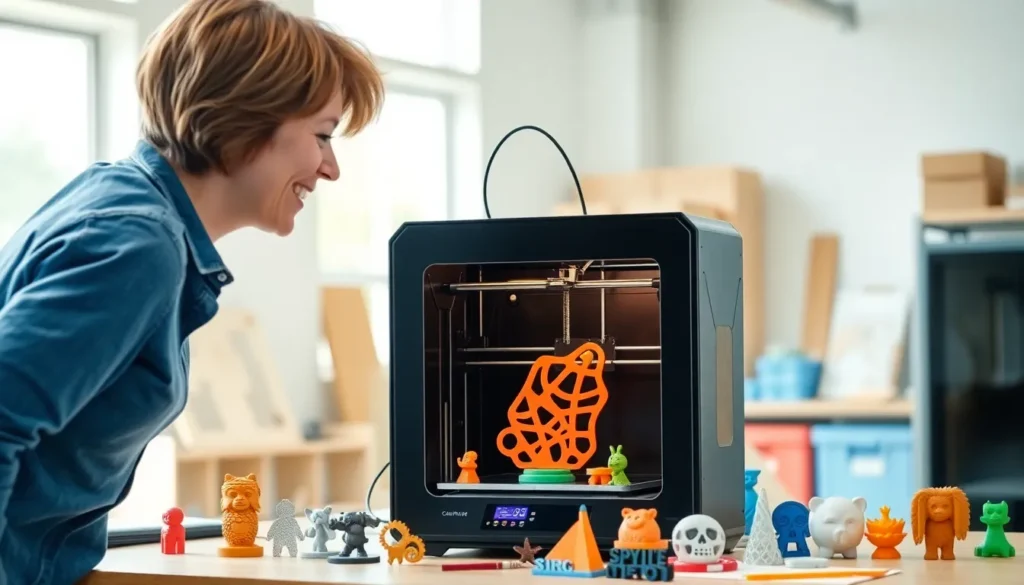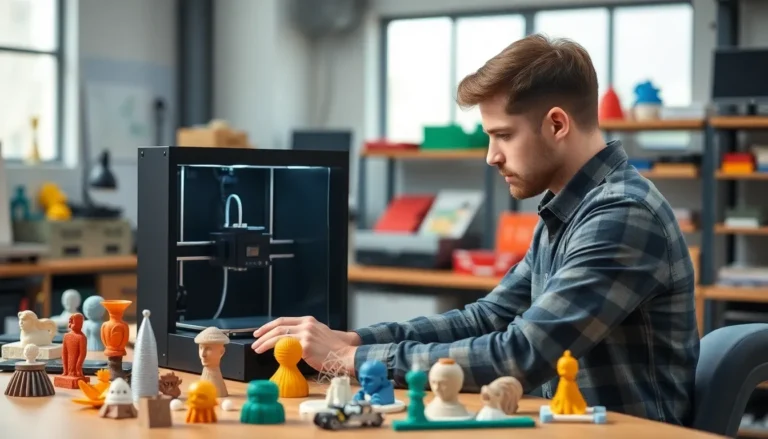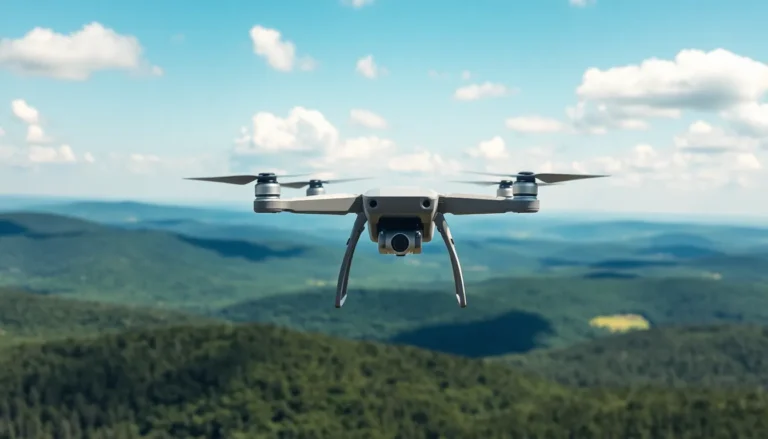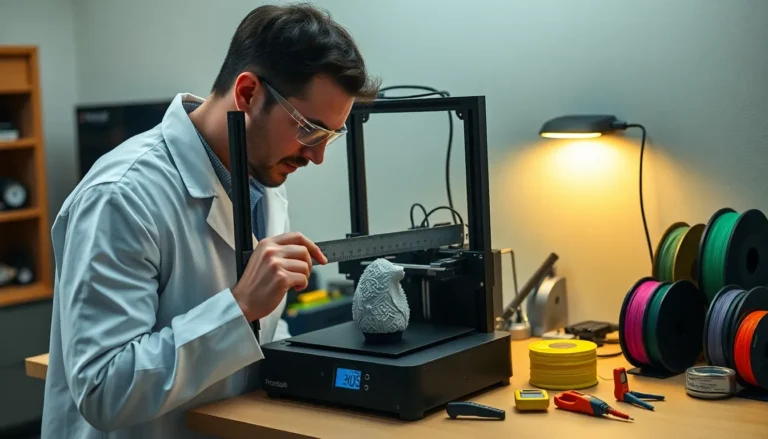Imagine a world where creating your own gadgets, toys, or even that quirky coffee mug isn’t just a dream but a reality. Enter the realm of user-friendly 3D printers, where the only limit is your imagination—and maybe the size of your workspace. These printers have evolved from complex machines that required a PhD in engineering to user-friendly devices that even your tech-challenged uncle can master.
Table of Contents
ToggleOverview of User-Friendly 3D Printers
User-friendly 3D printers simplify the printing process, enabling users of all skill levels to create diverse objects. Many models feature plug-and-play designs, requiring minimal setup to start printing. Intuitive interfaces guide users through each print.
Various printers incorporate automatic calibration, significantly reducing the need for manual adjustments. This feature lowers the barrier for beginners, allowing them to focus on creativity rather than technical details. Additionally, some user-friendly 3D printers support filament detection. This functionality pauses printing in the event of a filament jam or runout, preventing wasted materials.
Popular brands offer open-source software, making it easy to use a variety of design files. Compatibility with numerous file formats enhances accessibility, enabling users to find or create models with ease. Many devices also provide clear step-by-step instructions, ensuring that users can follow along without confusion.
Affordable models exist that effectively balance quality and usability. Costs for entry-level 3D printers often range from $200 to $500, making them attractive to casual users and hobbyists. These machines often come with comprehensive customer support options, fostering a sense of community among users.
Through advancements in technology, user-friendly 3D printers continue to become more intuitive. They encourage exploration and experimentation, allowing individuals to bring their ideas to life without daunting obstacles. Creativity flourishes when anyone can access these innovative tools, underscoring their impact in various fields, from education to home projects.
Key Features to Look For
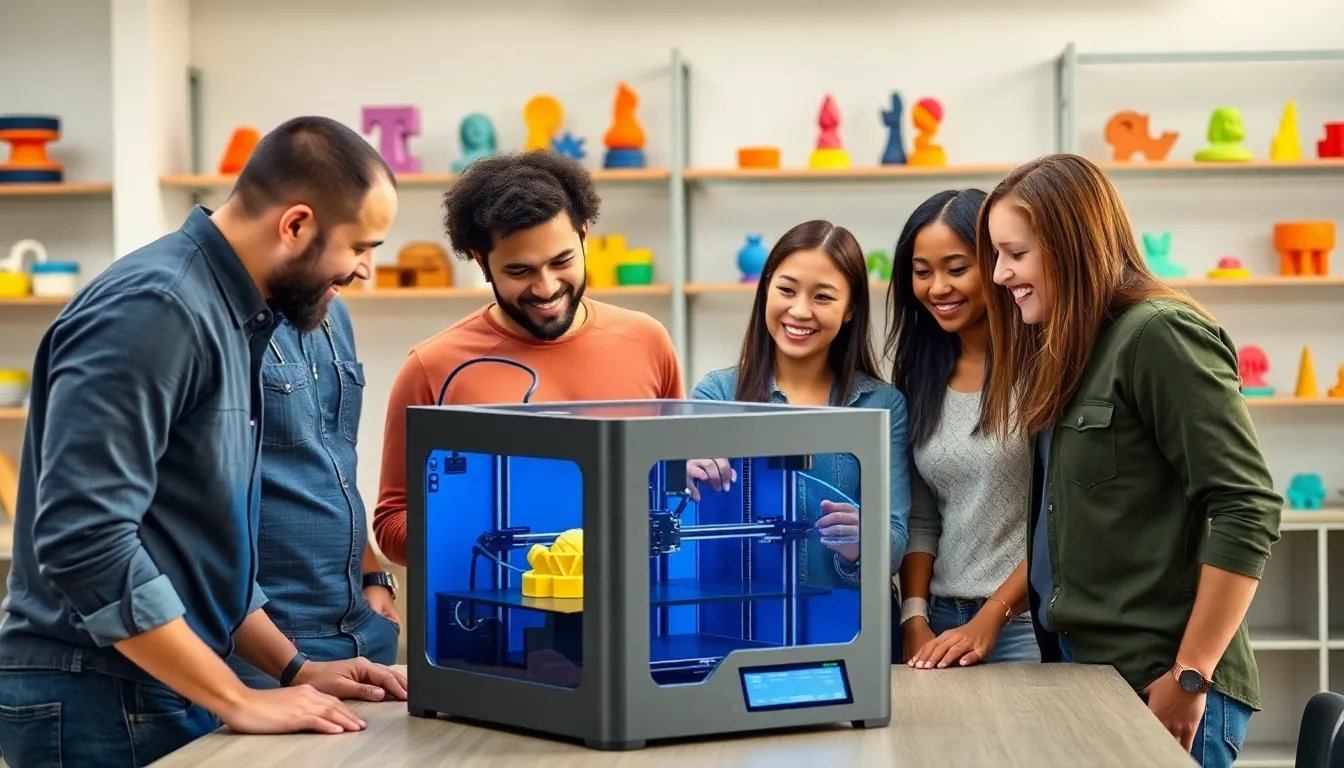
User-friendly 3D printers incorporate essential features that enhance usability and accessibility for everyone. When evaluating models, key factors include ease of use, setup process, and software compatibility.
Ease of Use
Intuitive interfaces improve user experience significantly. Most models feature touchscreens and guided prompts, making navigation straightforward. Beginners appreciate plug-and-play functionality, which eliminates complex configurations. Many brands also include built-in tutorials that help users grasp the printing process quickly. Simple adjustments ensure that even the most inexperienced users can achieve successful prints with minimal effort.
Setup Process
An efficient setup process saves time and promotes user engagement. Users should look for printers that offer quick assembly and minimal adjustment requirements. Automatic calibration simplifies the initial setup, allowing users to start printing sooner. Additionally, clear instructions and readily available online resources facilitate a hassle-free experience. By requiring little technical knowledge, these printers empower users to focus on their creative projects rather than complicated installation steps.
Software Compatibility
Software compatibility plays a crucial role in user satisfaction. Many user-friendly models support various file formats, enabling seamless design transfers. Open-source software options provide flexibility for those interested in customizing their printing experience. User-friendly interfaces in companion apps further enhance accessibility, guiding users through the design and printing process. Robust support from manufacturers often includes frequent updates, ensuring improved functionality and a smoother printing journey.
Top User-Friendly 3D Printers in 2023
The market for user-friendly 3D printers in 2023 offers exceptional options geared toward enhancing creativity and accessibility.
Printer Reviews
Many models excel in user-friendliness, making them ideal for beginners. The Creality Ender 3 V2 stands out for its affordability and solid performance. It features a straightforward assembly process and an intuitive interface. Another popular choice, the Anycubic Photon Mono, impresses with its high resolution, suitable for detailed prints. Ease of setup and operation makes it appealing to novice users. Lastly, the Prusa Mini+ receives praise for its robust community support and reliable customer service. Users benefit from built-in tutorials and a highly responsive LCD screen, simplifying the printing journey.
Pricing Comparison
Pricing for user-friendly 3D printers varies significantly. Entry-level models typically range from $200 to $500, making them accessible to many users. The Creality Ender 3 V2 averages around $250. In contrast, the Prusa Mini+ usually sells for about $399, reflecting its advanced features and support. Premium options, like the Anycubic Photon Mono, can range from $300 to $500, depending on additional features. Considering budget constraints and desired functionalities is essential when selecting the right printer.
Applications of User-Friendly 3D Printers
User-friendly 3D printers have a wide range of applications across various fields. In education, they enable students to engage in hands-on learning. Many schools utilize these printers to create custom projects that enhance STEM education. Students learn about design, engineering, and problem-solving through 3D printing, fostering creativity in the classroom.
In the realm of prototyping, businesses leverage user-friendly 3D printers to produce functional models quickly. Rapid prototyping accelerates product development, allowing companies to test concepts before mass production. The ability to easily tweak designs saves both time and money.
Furthermore, hobbyists explore woodworking, architecture, and gaming through creative projects. Personalized gadgets and figurines become feasible thanks to user-friendly designs. Platforms for sharing 3D models enhance collaboration among enthusiasts, enriching the community.
In healthcare, user-friendly 3D printers can create custom prosthetics and dental devices. Medical professionals use these printers to design patient-specific models that optimize results. The accessibility of these technologies significantly impacts patient care and treatment outcomes.
Moreover, the fashion industry sees innovation through 3D-printed accessories and apparel. Designers experiment with unique materials and structures that challenge traditional clothing production. Fashion-forward brands capitalize on 3D printing to offer bespoke designs and limited-edition collections.
Lastly, the architectural field benefits from scale models produced by user-friendly 3D printers. Architects use these models to present ideas to clients clearly and effectively. The transition from digital files to physical representations fosters better communication.
Across these applications, user-friendly 3D printers demonstrate their versatility and facilitate creativity and innovation in numerous sectors.
User-friendly 3D printers have transformed the landscape of creativity and innovation. Their evolution has made it possible for anyone to explore the world of 3D printing without the steep learning curve. With features like intuitive interfaces and automatic calibration, these printers empower users to focus on their ideas rather than technical challenges.
As the market continues to expand, individuals can find models that suit their needs and budgets. From education to healthcare and beyond, the applications of these printers are vast and varied. The accessibility and affordability of user-friendly 3D printers are paving the way for a future where creativity knows no bounds.

